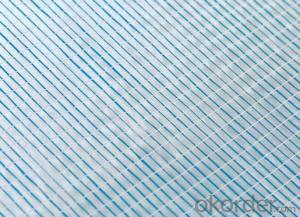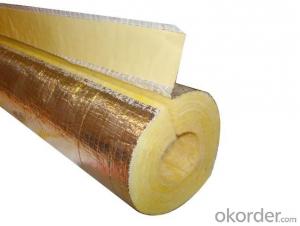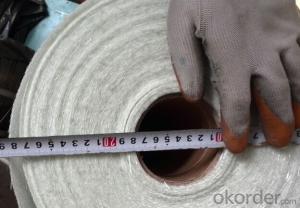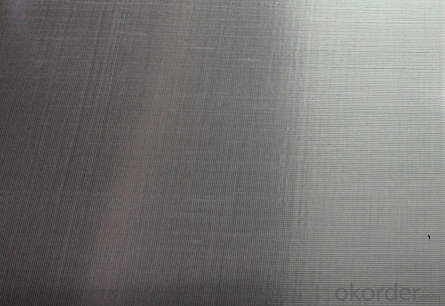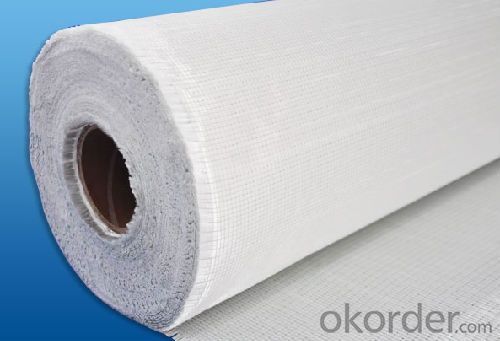Fiberglass Unidirectional fabric 350gsm 1000mm
- Loading Port:
- Shanghai
- Payment Terms:
- TT or LC
- Min Order Qty:
- 2000 kg
- Supply Capability:
- 50000 kg/month
OKorder Service Pledge
OKorder Financial Service
You Might Also Like
Process
Fiberglass unidirectional fabric is the product combining the roving in certain angel of 0 ℃ or 90 ℃ with polyester yarn.
Properties
• Fiber straight arranged, fiber strength be ultimately used.
• No powder or emulsion, sink quickly, easy to operate.
• Easy to design, high strength in one direction.
Applications
Mainly be used as reinforced materials in the composite material industry.
• Matrix: unsaturated polyester resin, vinyl ester resin, epoxy resin and phenolic resin etc.
• Craft: winding, pultrusion, hand lay up, etc.
• Ultimate products: storage tank, tube, pultruded profiles, FRP body of boat, etc.
Specifications
specifications
Fibre type
0°Roving
90°Roving
Overall weight
Width
(g/㎡)
(g/㎡)
(g/㎡)
(mm)
EDW227
E-Glass
—
227
227
1524
EDW350
E-Glass
—
350
350
1524
EDW450
E-Glass
—
450
450
1524
EDJ600
E-Glass
480
120
600
1524
EDJ800
E-Glass
600
200
800
1524
EDJ1000
E-Glass
600
400
1000
1524
Packaging: Wrapped in PVC and placed within a cardboard carton.
Images of Unidirectional
FAQ of Unidirectional
1. Why Choose us?
CNBM is a stated own company, provide the guarantee for the best quality, best service and safety business.
2. How will we guarantee the quality?
a, ISO 9001-2008 quality control system;
b, Strict and regular quality control in production;
c, Inspeciation when loading into container before shippment;
d, Sample stock for one year for quality tracing and record.
3. What is your MOQ?
Our MOQ is one pallet.
4. Can you provide sample?
Yes, samples are in stock. we can offer free sample for you.
5. Payment terms?
We can accept L/C, T/T etc.
6. Do you offer OEM service?
Yes, we can print customers’ logo on the packaging;
And the size and specification can be produced and design according to your demand.
- Q:Can fiberglass mat tissue be used for repairing fiberglass RVs?
- Fiberglass mat tissue is a suitable option for fixing fiberglass RVs. This lightweight and flexible material is commonly employed to strengthen and mend fiberglass structures. Its design allows for easy molding and shaping to conform to the contours of the damaged area, making it an excellent choice for repairing RVs with curved surfaces. To repair a fiberglass RV using fiberglass mat tissue, you must first clean and prepare the damaged area. This involves removing any loose or damaged fiberglass. Next, you cut the mat tissue to the appropriate size and shape, ensuring it covers the damaged area completely. Apply a suitable fiberglass resin or adhesive to both the damaged area and the backside of the mat tissue. Carefully place the tissue over the damaged area, pressing it down firmly to ensure proper adhesion. Once the repair is finished, allow the fiberglass resin or adhesive to cure according to the manufacturer's instructions. After curing, you can sand, prime, and paint the repaired area to match the rest of the RV's exterior. It's crucial to note that fiberglass mat tissue is typically used for smaller repairs and cosmetic damage. For more extensive structural repairs, additional reinforcement materials such as fiberglass cloth or woven roving may be necessary. It is highly recommended to consult a professional or refer to specific repair guides for detailed instructions on repairing fiberglass RVs.
- Q:Can fiberglass mat tissue be used for repairing fiberglass boats?
- Yes, fiberglass mat tissue can be used for repairing fiberglass boats. Fiberglass mat tissue is a versatile material that is commonly used in repairing and reinforcing fiberglass structures, including boats. It is designed to provide strength and durability, making it an ideal choice for patching holes, cracks, or damaged areas in fiberglass boat hulls. The mat tissue is typically layered with resin to form a solid and stable repair, ensuring that the boat remains structurally sound. Additionally, fiberglass mat tissue is easy to work with and can be cut to the desired size and shape, making it suitable for various repair applications on fiberglass boats.
- Q:Is fiberglass mat tissue suitable for sound absorption?
- No, fiberglass mat tissue is not suitable for sound absorption.
- Q:How does the roll weight of fiberglass mat tissue affect its transportation?
- The roll weight of fiberglass mat tissue can have a significant impact on its transportation process. The weight of the roll determines the ease of handling and the logistics required for transportation. Firstly, a heavier roll weight can make it more challenging to move and handle the fiberglass mat tissue. If the roll is too heavy, it may require specialized equipment or machinery for loading and unloading, such as forklifts or cranes. This can add complexity and cost to the transportation process. Moreover, the weight of the roll also affects the packaging and storage requirements during transportation. Heavier rolls may require sturdier packaging materials and additional precautions to ensure their stability and prevent any damage during transit. This can include using pallets, strapping, or other securing methods to prevent the roll from shifting or falling during transportation. The weight of the roll also impacts the overall cost of transportation. Heavier rolls can increase shipping costs, as carriers often charge based on weight. Additionally, the weight of the roll can affect the number of rolls that can be transported in a single shipment, which can impact the efficiency and cost-effectiveness of the transportation process. In summary, the roll weight of fiberglass mat tissue plays a crucial role in its transportation. It affects the ease of handling, packaging requirements, and overall cost of transportation. Therefore, it is essential to consider the roll weight when planning and organizing the logistics for transporting fiberglass mat tissue.
- Q:Is fiberglass mat tissue suitable for insulation in laboratories?
- Yes, fiberglass mat tissue is suitable for insulation in laboratories. It offers excellent thermal insulation properties, is resistant to high temperatures, and provides effective sound insulation. Additionally, it is non-combustible and chemically inert, making it ideal for laboratory environments where safety and performance are crucial.
- Q:Can fiberglass mat tissue be used for insulation in cleanrooms?
- Yes, fiberglass mat tissue can be used for insulation in cleanrooms. It is a commonly used material due to its excellent thermal insulation properties, low cost, and high resistance to chemicals and moisture. Additionally, fiberglass mat tissue has low particulate emission, making it suitable for cleanroom environments where maintaining a controlled and sterile atmosphere is crucial.
- Q:What are the different types of fiberglass mat tissue available?
- A variety of fiberglass mat tissues can be found, each possessing its own distinct qualities and uses. Some commonly encountered types include the following: 1. Chopped Strand Mat (CSM): This is the most widely utilized and fundamental kind of fiberglass mat tissue. It comprises randomly arranged chopped fiberglass strands held together by a binder. CSM is commonly employed in situations where strength and resilience are crucial, such as in the construction of boats and automotive components. 2. Continuous Filament Mat (CFM): Unlike CSM, CFM is fashioned from continuous fiberglass strands woven into a mat. This type of fiberglass mat tissue offers exceptional tensile strength and dimensional stability, making it ideal for applications necessitating high strength and stiffness, such as in aerospace components and wind turbine blades. 3. Surface Veil Mat: Surface veil mat is an extremely thin and lightweight fiberglass mat tissue primarily used for surface finishing and reinforcement. It is typically applied as a final layer in composite laminates to enhance surface smoothness and water resistance. 4. Stitched Mat: Stitched mat is produced by interweaving continuous fiberglass strands with stitching thread. This construction yields enhanced strength and improved drapability, facilitating easier conformity to complex shapes. Stitched mat is commonly utilized in applications necessitating a blend of strength and flexibility, such as in the production of pipes and tanks. 5. Binderless Mat: Binderless mat is a specialized kind of fiberglass mat tissue that lacks binders or resins. Instead, the fibers are mechanically bonded through a needling process. This renders binderless mat highly resistant to chemical attack and suitable for use in corrosive environments, such as chemical storage tanks and pipes. These examples merely touch upon the wide range of fiberglass mat tissues available. The selection of which type to employ hinges on the specific requirements of the application, encompassing factors such as strength, flexibility, surface finish, and resistance to various environmental influences.
- Q:Can fiberglass mat tissue be used for electrical enclosures?
- No, fiberglass mat tissue is not typically used for electrical enclosures. Electrical enclosures are designed to protect electrical equipment from outside elements like dust, moisture, and physical damage. They are usually made from materials that provide insulation and have high mechanical strength, such as sheet metal, plastic, or fiberglass reinforced plastic (FRP). While fiberglass mat tissue can provide some level of mechanical strength and insulation, it is not commonly used as the primary material for electrical enclosures due to its limited durability and lower resistance to moisture and impact.
- Q:Can fiberglass mat tissue be used for making lightweight panels?
- Fiberglass mat tissue is capable of being utilized in the creation of lightweight panels. Comprised of delicate glass fibers that have been bound together with a resinous binder, this thin and lightweight material is commonly employed in the construction field to bolster surfaces and enhance the strength of diverse applications. When applied to panel manufacturing, fiberglass mat tissue proves to be an excellent selection for generating lightweight panels. The material's slim and pliable nature permits it to be seamlessly integrated into panels without imposing substantial weight. Furthermore, fiberglass mat tissue boasts exceptional strength properties, which contribute to the panels' overall structural integrity. Moreover, fiberglass mat tissue furnishes the panels with insulation and soundproofing capabilities, making them ideal for situations necessitating these attributes. Additionally, the material exhibits resistance towards corrosion and moisture, thereby augmenting the panels' durability and longevity. In summary, fiberglass mat tissue is a versatile and lightweight material that can be effectively employed in the production of lightweight panels. Its strength, flexibility, insulation properties, and resistance to corrosion and moisture render it a suitable choice for a range of applications in industries such as construction, automotive, aerospace, and marine.
- Q:Are there any specific certifications or standards that fiberglass mat tissue must meet?
- Yes, fiberglass mat tissue must meet specific certifications and standards. These can include ASTM International standards such as ASTM D7055 for fiberglass mat used in roofing applications or ASTM C1667 for fiberglass mat used in gypsum panels. Additionally, the product may need to comply with industry-specific certifications like ICC-ES for construction materials or UL for fire resistance. Meeting these certifications and standards ensures the quality and performance of fiberglass mat tissue in various applications.
1. Manufacturer Overview |
|
|---|---|
| Location | |
| Year Established | |
| Annual Output Value | |
| Main Markets | |
| Company Certifications | |
2. Manufacturer Certificates |
|
|---|---|
| a) Certification Name | |
| Range | |
| Reference | |
| Validity Period | |
3. Manufacturer Capability |
|
|---|---|
| a)Trade Capacity | |
| Nearest Port | |
| Export Percentage | |
| No.of Employees in Trade Department | |
| Language Spoken: | |
| b)Factory Information | |
| Factory Size: | |
| No. of Production Lines | |
| Contract Manufacturing | |
| Product Price Range | |
Send your message to us
Fiberglass Unidirectional fabric 350gsm 1000mm
- Loading Port:
- Shanghai
- Payment Terms:
- TT or LC
- Min Order Qty:
- 2000 kg
- Supply Capability:
- 50000 kg/month
OKorder Service Pledge
OKorder Financial Service
Similar products
New products
Hot products
Hot Searches
Related keywords
